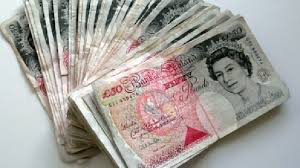Do you want BuboFlash to help you learning these things? Or do you want to add or correct something? Click here to log in or create user.
#globo-terraqueo-session #has-images #reading-fajo-de-pounds


This reading introduces the foreign exchange market, providing the basic concepts and terminology necessary to understand exchange rates as well as some of the basics of exchange rate economics.
If you want to change selection, open original toplevel document below and click on "Move attachment"
This reading introduces the foreign exchange market, providing the basic concepts and terminology necessary to understand exchange rates as well as some of the basics of exchange rate economics. The reading is divided up as follows. Section 2 describes the organization of the foreign exchange market and discusses the major players—who they are, how they
ricing for domestic assets—equities, bonds, real estate, and others—will also depend on demand from foreign investors. All of these various influences on investment performance reflect developments in the foreign exchange market. <span>This reading introduces the foreign exchange market, providing the basic concepts and terminology necessary to understand exchange rates as well as some of the basics of exchange rate economics. The reading is divided up as follows. Section 2 describes the organization of the foreign exchange market and discusses the major players—who they are, how they conduct their business, and how they respond to exchange rate changes. Section 3 takes up the mechanics of exchange rates: definitions, quotes, and calculations. This section shows that the reader has to pay close attention to conventions used in various foreign exchange markets around the world because they can vary widely. Sometimes exchange rates are quoted in the number of domestic currency units per unit of foreign currency, and sometimes they are quoted in the opposite way. The exact notation used to represent exchange rates can vary widely as well, and occasionally the same exchange rate notation will be used by different sources to mean completely different things. The notation used here may not be the same as that encountered elsewhere. Therefore, the focus should be on understanding the underlying concepts rather than relying on rote memorization of formulas. We also show how to calculate cross-exchange rates and how to compute the forward exchange rate given either the forward points or the percentage forward premium or discount. In Section 4, we discuss alternative exchange rate regimes operating throughout the world. Finally, in Section 5, we discuss how exchange rates affect a country’s international trade (exports and imports) and capital flows. A summary and practice problems conclude the reading. <span><body><html>
Parent (intermediate) annotation
Open itThis reading introduces the foreign exchange market, providing the basic concepts and terminology necessary to understand exchange rates as well as some of the basics of exchange rate economics. The reading is divided up as follows. Section 2 describes the organization of the foreign exchange market and discusses the major players—who they are, how they
Original toplevel document
Reading 20 Currency Exchange Rates Introductionricing for domestic assets—equities, bonds, real estate, and others—will also depend on demand from foreign investors. All of these various influences on investment performance reflect developments in the foreign exchange market. <span>This reading introduces the foreign exchange market, providing the basic concepts and terminology necessary to understand exchange rates as well as some of the basics of exchange rate economics. The reading is divided up as follows. Section 2 describes the organization of the foreign exchange market and discusses the major players—who they are, how they conduct their business, and how they respond to exchange rate changes. Section 3 takes up the mechanics of exchange rates: definitions, quotes, and calculations. This section shows that the reader has to pay close attention to conventions used in various foreign exchange markets around the world because they can vary widely. Sometimes exchange rates are quoted in the number of domestic currency units per unit of foreign currency, and sometimes they are quoted in the opposite way. The exact notation used to represent exchange rates can vary widely as well, and occasionally the same exchange rate notation will be used by different sources to mean completely different things. The notation used here may not be the same as that encountered elsewhere. Therefore, the focus should be on understanding the underlying concepts rather than relying on rote memorization of formulas. We also show how to calculate cross-exchange rates and how to compute the forward exchange rate given either the forward points or the percentage forward premium or discount. In Section 4, we discuss alternative exchange rate regimes operating throughout the world. Finally, in Section 5, we discuss how exchange rates affect a country’s international trade (exports and imports) and capital flows. A summary and practice problems conclude the reading. <span><body><html>
Summary
| status | not read | reprioritisations | ||
|---|---|---|---|---|
| last reprioritisation on | suggested re-reading day | |||
| started reading on | finished reading on |
Details
Discussion
Do you want to join discussion? Click here to log in or create user.